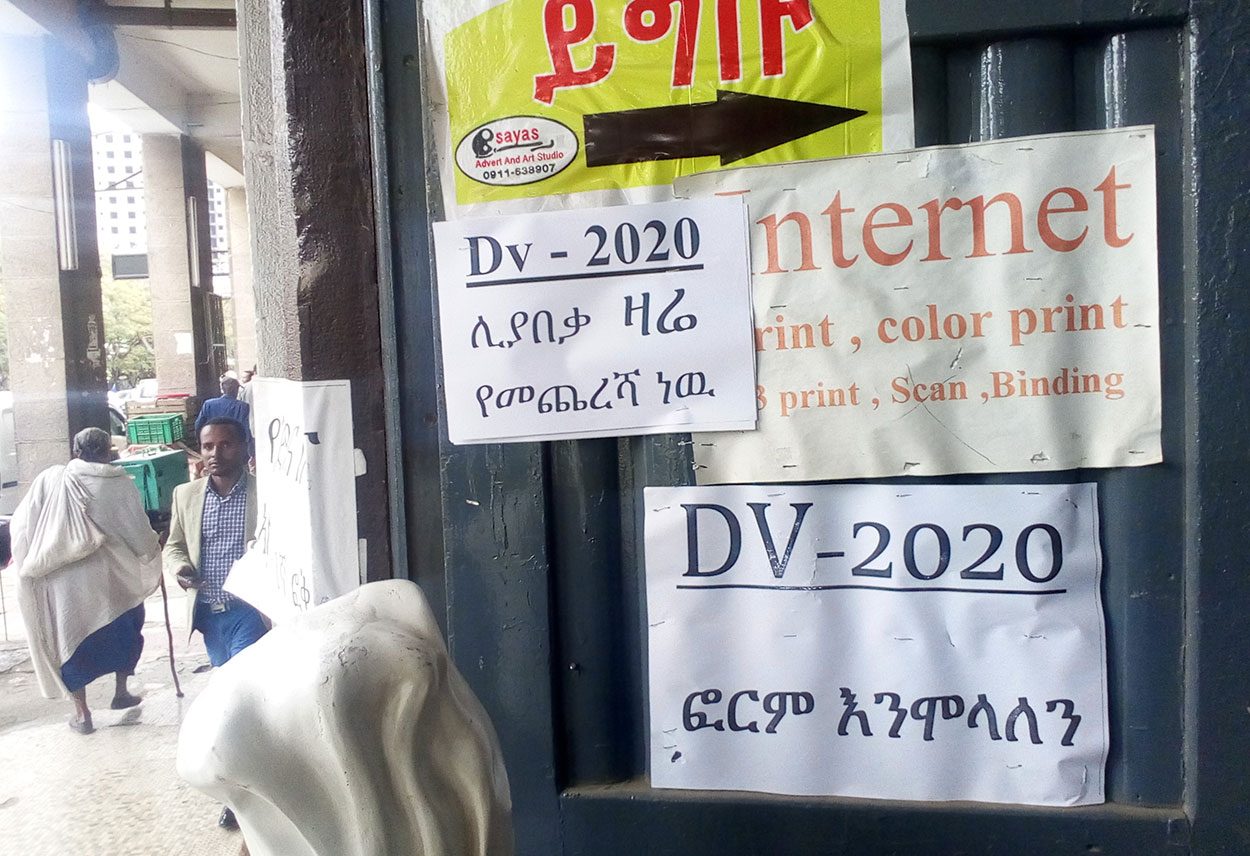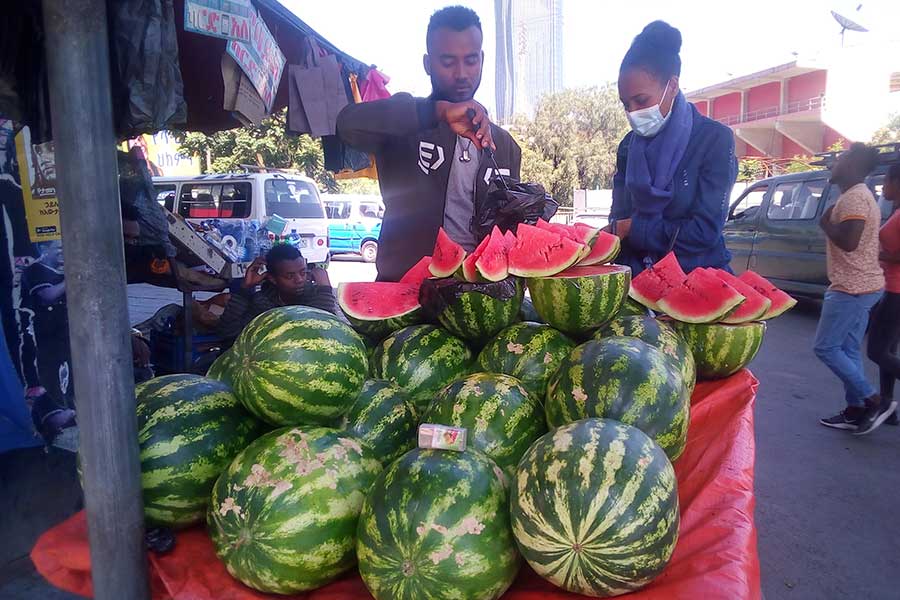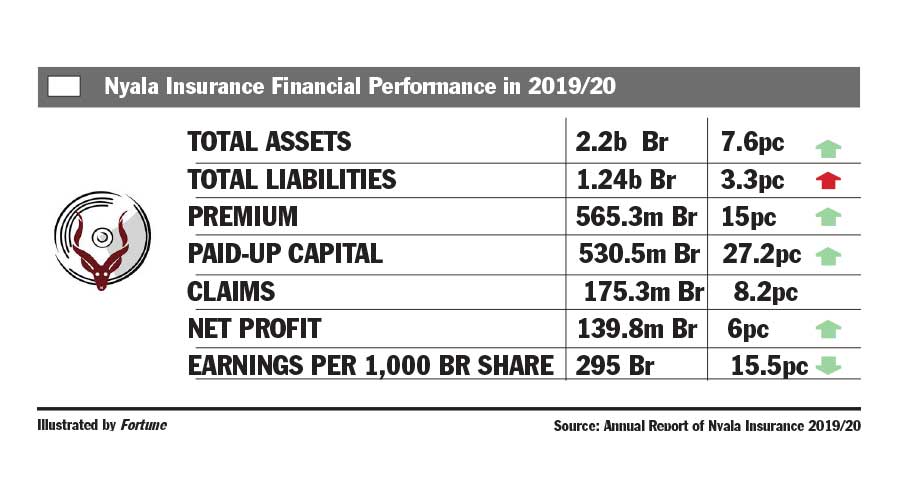
Agenda | Aug 18,2024
Yaqob Workneh, 42, a legal expert, has been a connoisseur of fish for the past 15 years, especially during fasting seasons like Abiy Tsome, the Ethiopian Orthodox Lent.
He visits Seble Fish Restaurant in Arat Kilo once every month on normal occasions, but when it is fasting season, he is there at least three times a week.
"It is the food I turn to when it is the fasting season,” he said. “I’ve read about the nutritional value, which makes it very important for me.”
The financial importance of this season is not lost on the restaurants either. Seble, which gets its supply of fish from Bahir Dar and Arba Minch, sells around 150 fish meals a day during the year. But during the fasting season, that number spikes to 250 a day, including fried fish, fish stew and fish goulash.
The nation's fish market has changed over the years thanks to declines in both demand and supply. The problem is just as evident during the fasting season as it is in the regular season.
Fiker Alebachew, 28, who owns Gion Fish Retailer in Atikilt Tera, famous for its abundance of fishmongers, has felt the decline in the value of the market.
She stocks tilapia and catfish, aka Ambazaand Qoroso, respectively, from Bahir Dar and fish fillet, or Filito, from Tekeze and Ziway. The average price of fish has spiked to 115 Br a kilogram from 70 Br during 2018's fasting season.
“I used to stock at least 100Kg of fish each day, but now I only manage to do half as much in two days,” she said. “I am no longer able to get NechAsa, [Nile perch] which I used to as recently as two years ago.”
Shops prepare fish for sale in Atikilt Tera, which is known for its abundant fish shops.
Yohannes Geremew, 32, owner of Jhonny Fish Retail Shop, agrees. Running a family business that was first started by his grandfather, he says he is at his wit's end.
"I have been in the business for 12 years," Yohannes told Fortune. "I have never experienced a decline in the market on this level."
Fish production in Ethiopia grew annually at an average of 27.7pc for three years beginning in 2013.
Starting three years ago, that number shrank to less than one percent growth. It grew by 11.3pc last year but remains far below its levels of 2013. Fish production contributes 0.05pc to the overall economy or gross domestic product.
Despite a potential of producing 94,500tn of fish a year and the Blue Nile Basin supporting 77 fish species, the nation last year produced around 59.4pc of its potential.
In Kenya, fish production from freshwater sources stood at almost double the amount in Ethiopia in 2017, which saw a 9.5pc decline from the previous year.
The total water area of the lakes and reservoirs of Ethiopia stands at 7,400 square kilometres, while rivers stretch an aggregate of 7,000Km in the country. It is estimated that Ethiopia has between 180 and 200 fish species, over a third of which are considered endemic.
More than 70pc of the fish produced in Ethiopia are harvested from Abaya, Chamo, Tana, Ziway and Awassa lakes. The rest are from dams such as Finchaa, Qoqa and Tekeze. While most of the fish comes from Oromia, Amhara, SNNP and Gambella regional states, tilapia, Nile perch and catfish are the most consumed species both in private and commercial settings.
Seble Fish Restaurant around Arat kilo sells around 150 fish meals a day during the year. But during the fasting season, that number spikes to 250 plates a day. Customers are waiting while a deep-fried fish meal seats on the counter waiting to be served.
Ethiopia shares the distinction of having the lowest per capita consumption of fish in the world with landlocked countries such as Afghanistan and Lesotho.
The main reasons for the decline in the market despite the nation's resources are illegal fishing, industrial pollution and water diversions, according to Biruk Waqjira, a fisherman for close to four decades in Ziway. Two years ago, he left the fishing business and moved to farming.
"For instance, qorosoin the lakes has decreased, and their sizes have become small," he said. “The situation has gotten so bad that it was becoming hard to afford to send fish to the Addis Abeba market.”
The authorities have the same view on why the industry is experiencing a decline, condemning the use of illegal fishing nets, which have tiny holes and trap smaller fish.
Nets that trap small fish have been recognised as one of the hazards to fish population declines, which deprive bigger fish of their food sources.
Fish resources from rivers and lakes are yielding a meager amount, according to Hussien Abegaz, fishery resource development director at the Ministry of Agriculture.
“The dip in the demand side can be explained by the fact that there is no enthusiasm to eat fish among those who fast, as the practice has come to be viewed contrary to religious rules,” he says.
"Currently, we are preparing a directive to regulate fishing licenses and are preparing awareness campaigns on fishing," he adds.
Another reason for the decline in the fish supply is the spread of hyacinth weed, aka Emboch, in lakes such as Tana and Ziway. In the former, the weed grew to cover over 5,000ha of water surface last year.
Embochis also a problem in Dembia, North Gonder and Fogera and Dera, South Gonder. The weed blocks sunlight from reaching underwater algae that is a food source to some fish at the lowest rung of the food chain. The Embochthat dies and decomposes also releases harmful toxins for the fish population.
But both industry insiders and the authorities agree that Embochis not responsible for the decline in fish production compared with illegal fishing and the dumping of toxic chemicals and waste material into lakes and rivers.
Access to fishing in any water body is easy to find, and this situation harms the productivity of fish in the country, according to Dereje Tewabe, who has been a researcher for two decades and a director of Bahir Dar Fishery & Other Aquatic Life Research Centre. He added that fishing during the spawning season close to where fish lay eggs affects the productivity of fish.
In Lake Tana, six years ago when production stood at 9,000tn, the number of licensed fishermen was 3,100. Last year, production declined to 7,300tn, but licensed fishermen increased to 5,400.
"To balance supply with demand, we have to diversify our production method, which entails fish farming," Dereje says. "We have to apply aquaculture in lakes, educate the farmers to produce fish even in small places for food security and create artificial lakes.”
PUBLISHED ON
Apr 13,2019 [ VOL
20 , NO
989]

Agenda | Aug 18,2024

Featured | Dec 22,2018

Fortune News | Dec 02,2023

Radar | Oct 31,2020

Featured | Jan 07,2024

Viewpoints | Jun 08,2024

Fortune News | Feb 27,2021

Fortune News | May 27,2023

Commentaries | Jul 17,2022

Radar | May 11,2024

Dec 22 , 2024 . By TIZITA SHEWAFERAW
Charged with transforming colossal state-owned enterprises into modern and competitiv...

Aug 18 , 2024 . By AKSAH ITALO
Although predictable Yonas Zerihun's job in the ride-hailing service is not immune to...

Jul 28 , 2024 . By TIZITA SHEWAFERAW
Unhabitual, perhaps too many, Samuel Gebreyohannes, 38, used to occasionally enjoy a couple of beers at breakfast. However, he recently swit...

Jul 13 , 2024 . By AKSAH ITALO
Investors who rely on tractors, trucks, and field vehicles for commuting, transporting commodities, and f...

Jul 12 , 2025
Political leaders and their policy advisors often promise great leaps forward, yet th...

Jul 5 , 2025
Six years ago, Ethiopia was the darling of international liberal commentators. A year...

Jun 28 , 2025
Meseret Damtie, the assertive auditor general, has never been shy about naming names...

Jun 21 , 2025
A well-worn adage says, “Budget is not destiny, but it is direction.” Examining t...